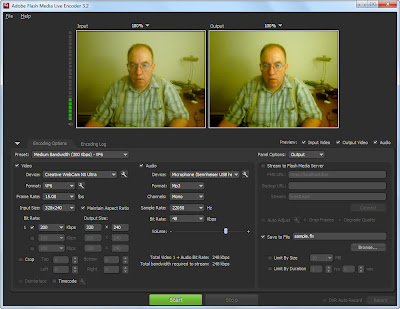Tuesday, August 30, 2011
Five Tips For Maintaining a Healthy Windows System
Friday, August 26, 2011
Reducing the Intrusiveness of Computing
More than 40 years ago, computer-age pioneers Seymour Papert and Alan Kay envisioned the pervasive use of computers in modern society. They grappled with the idea that computers might function to support the individual behavioral enactments that underlie everyday tasks. Support for behavioral enactments was to be provided to the individual at the moment of need and in a non-intrusive manner. Papert and Kay’s vision would not be realized for more than three decades. One company that has led the charge to make computing software less intrusive is Google. In fact, the efforts of this company toward less invasive software will likely give it publishing rights to the predominant form of productivity software in the near future.
The key contributor to the success of Google’s brand of non-invasive software is Google’s focus on the elimination of tasks that must be performed to enable users to generate products or artifacts. For example, generating and sharing a Google Doc requires far less effort than generating a Microsoft Word document and sharing it with colleagues. A Google Doc is automatically saved and does not require users to execute a series of commands to save a document. This functionality is an improvement over productivity software generated over the past two decades, as the majority of productivity software produced during the past 20 years required users to execute numerous commands in the generation of individual artifacts. Such requirements have made productivity software less user-friendly. Improved sharing capabilities represent another improvement of a Google Doc over past developments of productivity software. A Google Doc can be shared by clicking a link, typing an email address, and clicking a Share & Save button. These three steps are far less intrusive than the steps involved in creating a Microsoft Word document and sending the Microsoft Word document via email.
The functional utility of a Google Doc shows that the vision of pioneers Seymour Papert and Alan Kay is finally becoming a reality.
Friday, August 19, 2011
The Quickest Video Solution There Is
But a lot of their stuff is free, too. You know about the Acrobat Reader, which has been freely distributed for a decade and a half now. So is the Flash player, which supports a vast amount of the video you consume on the web at this time.
One of Adobe's free software solutions makes the recording and distribution of simple videos a blazingly fast and simple process. Adobe Live Media Encoder 3.2 is a free download from http://www.adobe.com. I just used it to record 24 video assessments of nursing students, each one lasting 3-6 minutes, and uploaded them to a secure web server for student viewing and self-critiques. The turnaround time between the end of the recording and the performance of the video in the classroom was less than 10 minutes for each video.
Adobe Live Media Encoder (ALME) is ideal for recording "live" presentations such as:
- introductions by professors to online content in Blackboard.
- summations by professors at the end of a unit of instruction.
- presentations by students.
- any brief demonstration for which no video editing is required.
ALME records "flash videos". These are video files with a ".flv" extension. This is important because uploading a flash video to the web services such as YouTube or Google Video is almost instantaneous. There is virtually no downtime to the video being made ready to view over the web. FLV videos can be imported directly, and all but instantaneously, to a Powerpoint presentation using Adobe Presenter tools, for eventual publication to the web. They can be performed in an Adobe Connect meeting. They can be uploaded to USF's Adobe Connect server for on-demand viewing. Got "Captivate"? It can go in that screen-capture software as well.
There are a couple of disadvantages to FLV videos. They cannot be viewed directly on the computer by themselves; they need to be uploaded to a "container" solution such as the YouTube player, or the Adobe Connect server's built-in player application.
There are methods to embedding an FLV video into a web page, but you have to go through the hoop of pasting the embedding code into the web page.
And the user interface to ALME is a bit daunting:
 But, given the results that I've described ("Wow, I can record a student's work and show it to him/her a few minutes later in class!"), it could be worthwhile to learn a few simple steps for using this software.
But, given the results that I've described ("Wow, I can record a student's work and show it to him/her a few minutes later in class!"), it could be worthwhile to learn a few simple steps for using this software.
Can I show you?
Just download it to your computer and let me know, and I'll help.
Tuesday, August 16, 2011
Oh, My Aching Back!
 Have you ever wondered if there was another way to obtain a textbook other than lugging around a 400 page, 20 lb. wealth of knowledge? Well thanks to Barnes and Noble, they have made the Nook THE reader for students. B&N have done this by bundling $100 worth of texts like A Tale of Two Cities, and The Great Gatsby, just to name a few – the kind of books we all need in our literature courses, into each new Nook.
Have you ever wondered if there was another way to obtain a textbook other than lugging around a 400 page, 20 lb. wealth of knowledge? Well thanks to Barnes and Noble, they have made the Nook THE reader for students. B&N have done this by bundling $100 worth of texts like A Tale of Two Cities, and The Great Gatsby, just to name a few – the kind of books we all need in our literature courses, into each new Nook. More good news is that Amazon, owner of the Kindle, a competitor reader to the Nook, will rent eBook textbooks to students for discounts.
So with textbooks catching up to technology, perhaps you won’t have to visit your chiropractor this year because of the weight of your backpack.
Friday, August 5, 2011
The 21 Greatest PC Mysteries--Solved!
 Find out why your documents won't print, where your downloads disappear to, what a .dat file is, how those infernal toolbars invaded your browser, and much
Find out why your documents won't print, where your downloads disappear to, what a .dat file is, how those infernal toolbars invaded your browser, and much more->>

